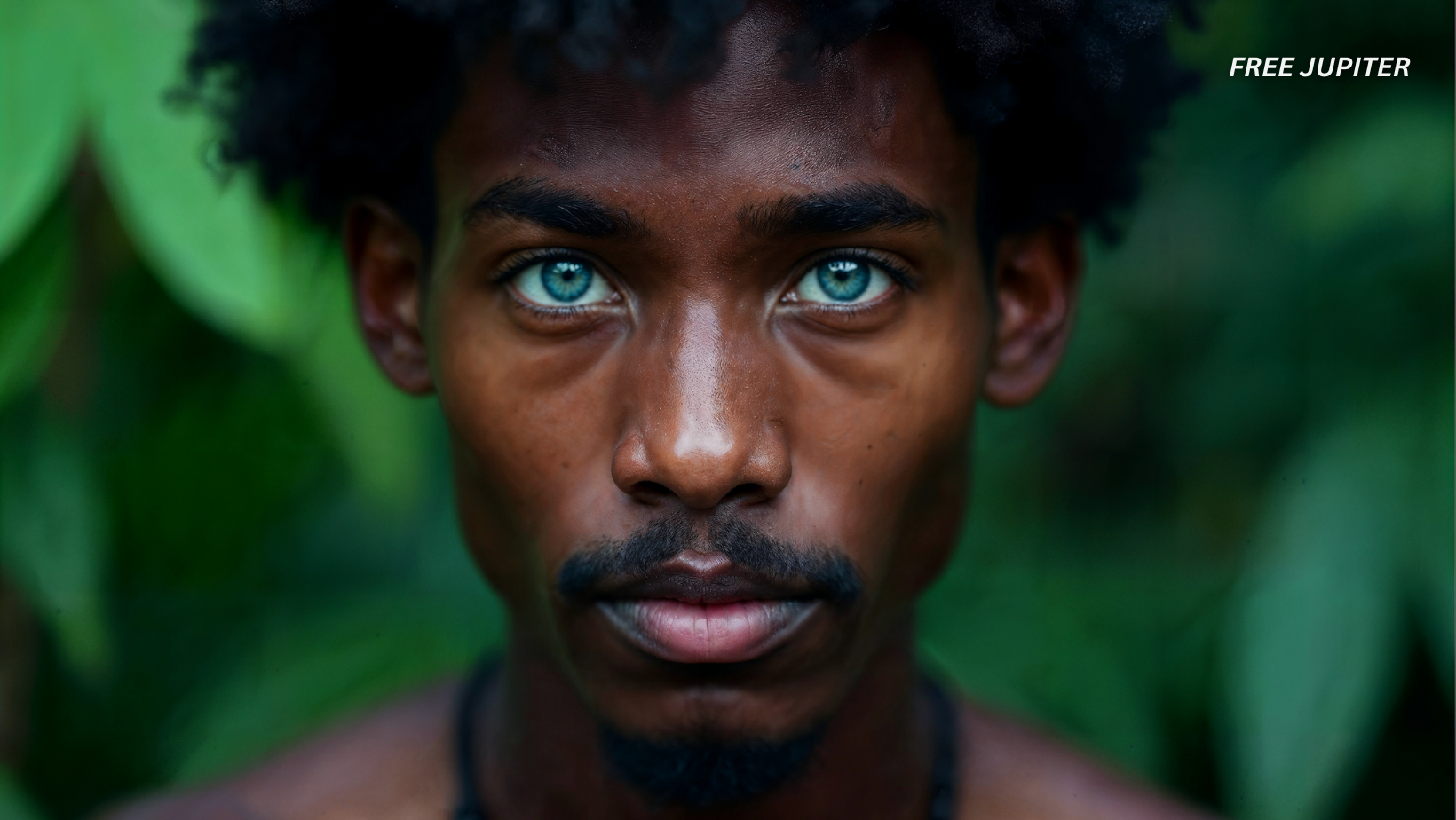Friendly Note: FreeJupiter.com shares general info for curious minds 🌟 Please fact-check all claims—and always check health matters with a professional 💙
Tucked away in Indonesia’s Southeast Sulawesi, the tropical island of Buton is home to green forests, sunlit beaches—and an unexpected human marvel. Among the island’s roughly 450,000 residents, a small tribe known as the Kaimbulawa stands out in a spectacular way. Some of its members have dazzling, electric-blue eyes—a trait that turns heads and sparks curiosity.
In a country where most people have rich brown eyes and deep black hair, these icy blue eyes seem almost otherworldly. And indeed, science tells us they are quite rare—especially in this part of the world.
But what’s behind this curious flash of color? The answer lies in a rare genetic condition and a surprising slice of history.
A Genetic Twist: When Biology Paints in Blue
The vivid blue eyes of the Kaimbulawa are not merely a quirk of fate. They’re the result of Waardenburg syndrome, a rare hereditary condition that affects how pigment develops in the body. Named after Dutch ophthalmologist Petrus Johannes Waardenburg, who first described it in the 1950s, the syndrome causes changes in skin, hair, and eye color. In some cases, it also affects hearing.
Most people with Waardenburg syndrome are born with very pale blue eyes or two different colored eyes—say, one blue and one brown. Some might have a white forelock of hair or patches of lighter skin. Though the syndrome can cause partial hearing loss in some individuals, many affected people live full, healthy lives.
What makes Waardenburg syndrome especially fascinating in Buton is how it has become part of the tribe’s identity—both genetically and culturally.
Read more: Switzerland Transforms Its Train Tracks Into Solar Energy Power Generators
A Look Back: How Portuguese Sailors Left More Than Footprints
To understand how this rare gene ended up on a remote Indonesian island, we have to rewind several centuries—back to the Age of Exploration. In the 16th century, European traders set sail in search of spices, and Buton Island, rich in nutmeg and cloves, caught the attention of Portuguese explorers.
These traders didn’t just do business. Some stayed. They formed relationships—social, political, and romantic—with local communities. A few even married into the ruling families of the island, creating a fusion of European and Indonesian bloodlines. This cultural mingling, over generations, passed along certain genetic traits, including lighter eye colors.
Fast forward a few hundred years, and this once-tiny seed of European ancestry still shows itself—in the form of glacial blue eyes nestled among a sea of dark irises.
When Being Different Was Dangerous
But it wasn’t all wide-eyed wonder. Blue-eyed children growing up in Buton were sometimes seen as too different. During the Dutch colonial period, anything that hinted at European lineage could draw suspicion, jealousy, or outright discrimination. Kids were teased, isolated, and sometimes made to feel like outsiders in their own communities.
This kind of social bullying left a mark—not just on individual children, but on generations of families who carried the trait. For some, blue eyes became something to hide rather than celebrate.
Read more: One Dropped Bag of Cheetos May Have Triggered Ecosystem Chaos in America’s Largest Cave Chamber
The Internet Changes Everything
But then came the era of smartphones—and Instagram.
Thanks to social media, what was once seen as strange is now being redefined as extraordinary. Viral photos of Kaimbulawa tribe members with hypnotic blue eyes have swept across platforms like TikTok and Twitter. These aren’t just pretty portraits—they’re powerful cultural statements.
In an era when visibility matters more than ever, these viral moments have helped the tribe reclaim their narrative. Their genetic uniqueness is no longer a source of stigma. It’s become a symbol of pride, sparking worldwide curiosity and admiration.
Blue Eyes in Unexpected Places
Interestingly, the Kaimbulawa are not the only population where blue eyes appear unexpectedly.
In Papua New Guinea, for instance, some indigenous children are born with bright blue eyes despite having no recent European ancestry. In this case, scientists have traced the cause to a completely different gene mutation—not Waardenburg syndrome, but one affecting melanin production in the iris.
This discovery reminds us that nature often finds more than one way to paint with the same color palette. Just because blue eyes are most common in Northern Europe doesn’t mean they’re exclusive to it. Evolution, mutation, and migration all work together to scatter genes in the most surprising ways.
What Makes Us “Us”
At the end of the day, the story of the Kaimbulawa’s blue eyes isn’t just about biology. It’s about identity, resilience, and the beauty of being different in a world that often pushes for sameness.
It’s about the kids who were once bullied for their eyes now growing up to be internet icons. It’s about genes that traveled across oceans centuries ago and still ripple through bloodlines today. And it’s about how science and culture intertwine—sometimes in mysterious, breathtaking ways.
Read more:Scientists Use Patient’s Own Eye Stem Cells to Restore Vision in Groundbreaking Study
Final Thought: A Glimpse Into the Unpredictable
Science is full of patterns, but it also thrives on exceptions—the delightful and sometimes puzzling ways nature bends its own rules. The Kaimbulawa tribe’s story is a vivid example of this unpredictability. In a country where dark eyes are the norm, their piercing blue eyes are a visual anomaly, one that opens up larger questions about how we define ancestry, identity, and belonging.
What makes their story so compelling isn’t just the genetic twist—it’s how that twist echoes across centuries, continents, and cultures. It reminds us that human history is rarely linear. Genes don’t follow national borders or social expectations. They sneak across oceans with sailors, hitch rides through generations, and occasionally surface in the most unexpected places—like an island in Indonesia, where eyes the color of glaciers gleam against sun-darkened skin.
More importantly, the Kaimbulawa experience reminds us that being different has often come at a cost. These blue-eyed children didn’t just inherit a rare gene—they inherited the weight of being visibly “other.” For years, they were treated as outsiders in their own homeland. But now, that same difference is becoming a source of pride, curiosity, and cultural power. In a way, their story mirrors the broader human journey: the push and pull between exclusion and celebration, stigma and recognition.
Disclaimer: The information in this article is for general informational purposes only and is not medical advice. We are not doctors, and this website is run as a family hobby project. Always consult a qualified healthcare professional before making decisions about your health. Please fact-check any claims and use this content as a starting point, not a substitute for professional guidance.










